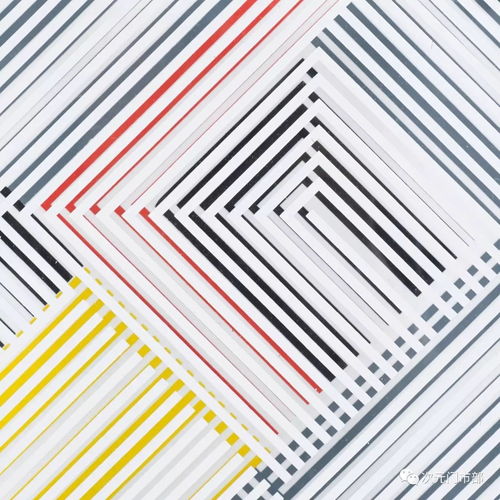Op Art Tutorial: A Comprehensive Guide to Creating Optical Illusions
Are you intrigued by the mesmerizing world of Op Art? Do you want to learn how to create your own optical illusions? Look no further! This tutorial will take you through the ins and outs of Op Art, providing you with the knowledge and skills to create stunning visual effects.
Understanding Op Art

Op Art, short for optical art, is a genre of abstract art that creates the illusion of movement, depth, or three-dimensionality through the use of patterns and shapes. It was popularized in the 1960s and has since captivated viewers with its ability to trick the eye.
Op Art relies heavily on the principles of perception and the way our eyes interpret visual information. By using contrasting colors, geometric shapes, and repeating patterns, artists can create an array of optical illusions that seem to move, pulse, or expand.
Tools and Materials

Before diving into the world of Op Art, it’s essential to gather the necessary tools and materials. Here’s a list of items you’ll need:
- Paper or Canvas: Choose a smooth, non-textured surface to create your Op Art masterpiece.
- Paint or Markers: Use vibrant colors to create contrast and enhance the optical effects.
- Graph Paper or Ruler: To maintain precise lines and shapes, a ruler or graph paper can be helpful.
- Eraser: For making corrections or adjusting your design.
Creating Basic Geometric Shapes

One of the fundamental elements of Op Art is the use of geometric shapes. Start by practicing drawing basic shapes such as circles, squares, triangles, and hexagons. Here’s a step-by-step guide to drawing a simple circle:
- Using a compass or a round object, draw a circle on your paper or canvas.
- Divide the circle into equal sections using a ruler or graph paper.
- Fill in the sections with different colors, creating a vibrant contrast.
Experiment with various shapes and colors to see how they interact and create optical illusions.
Creating Repeating Patterns
Repeating patterns are a key component of Op Art. They create a sense of movement and can enhance the visual effects. Here’s how to create a simple repeating pattern:
- Choose a geometric shape, such as a triangle or hexagon.
- Draw the shape in a consistent direction, such as diagonally or horizontally.
- Repeat the shape across the entire surface, maintaining the same spacing and direction.
Experiment with different shapes, sizes, and orientations to create unique patterns that captivate the eye.
Using Contrast to Enhance Optical Effects
Contrast is a crucial element in Op Art, as it creates a striking visual impact. Here’s how to use contrast to enhance your optical illusions:
- Choose two contrasting colors, such as black and white or red and blue.
- Apply the colors to different parts of your design, creating a clear distinction between them.
- Experiment with the placement and size of the contrasting colors to see how they affect the overall optical effect.
Remember, the more contrast you have, the more striking your Op Art will be.
Adding Depth and Dimension
Op Art can be enhanced by adding depth and dimension to your designs. Here are a few techniques to achieve this:
- Shading: Add shadows or highlights to create the illusion of depth.
- Overlapping shapes: Place shapes on top of each other to create a sense of depth.
- Texture: Use different textures or materials to add interest and dimension to your artwork.
Final Thoughts
Creating Op Art can be a fun and rewarding experience. By following this tutorial, you’ve learned the basics of Op Art, including understanding the principles, gathering the necessary tools, creating geometric shapes, repeating patterns, using contrast, and adding depth and dimension.
Remember, the key to successful Op Art is experimentation. Don’t be afraid to try new techniques and combinations of shapes, colors, and patterns. With practice, you’ll be able






